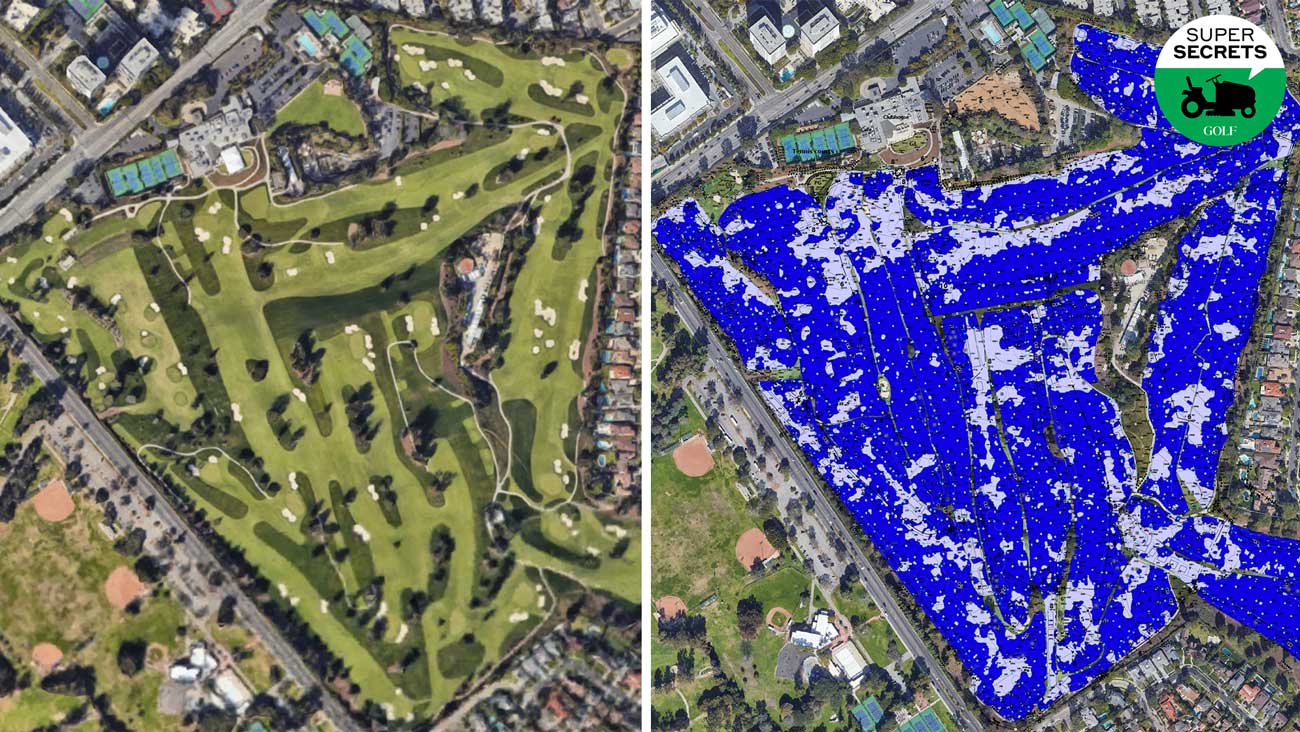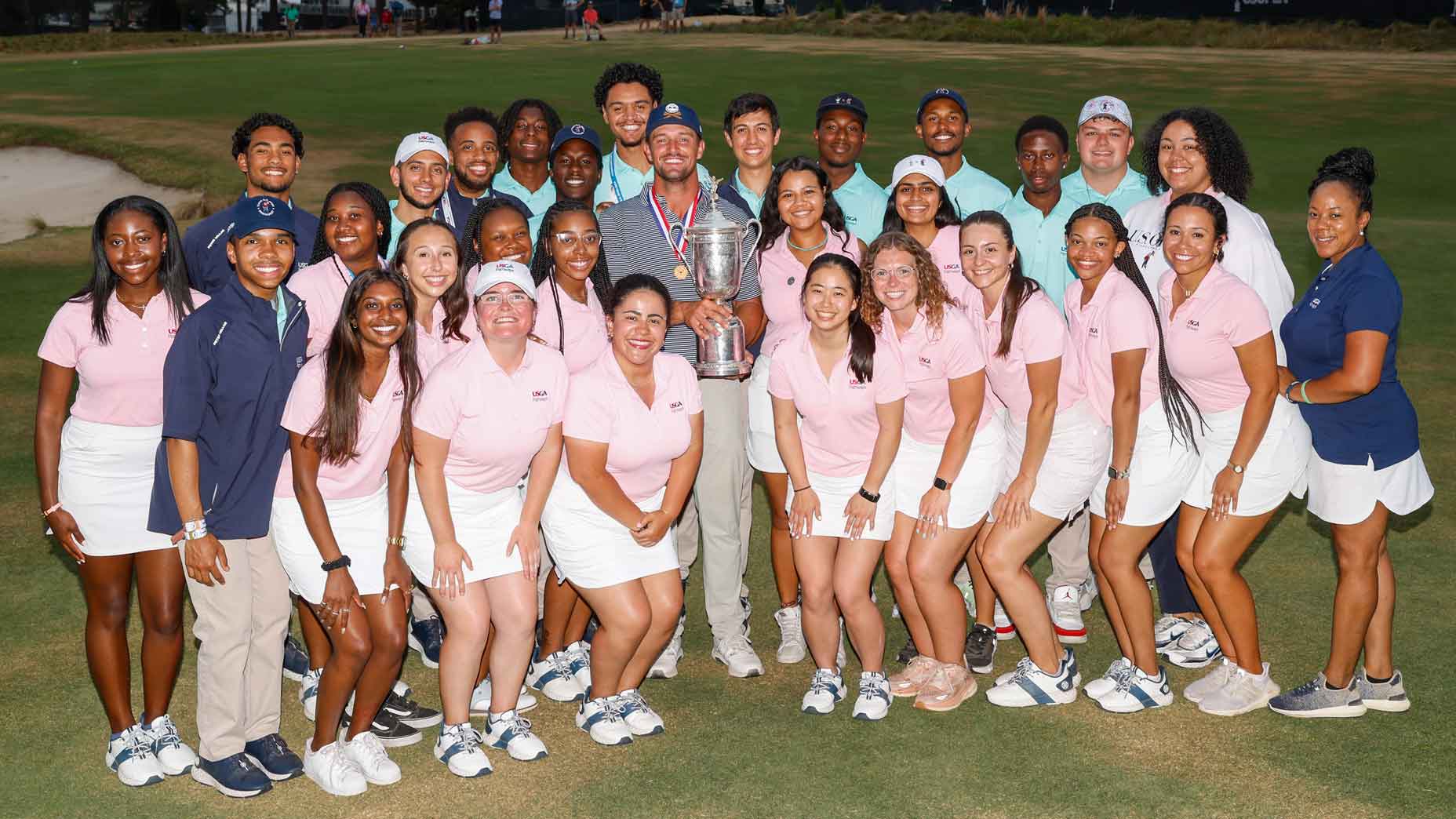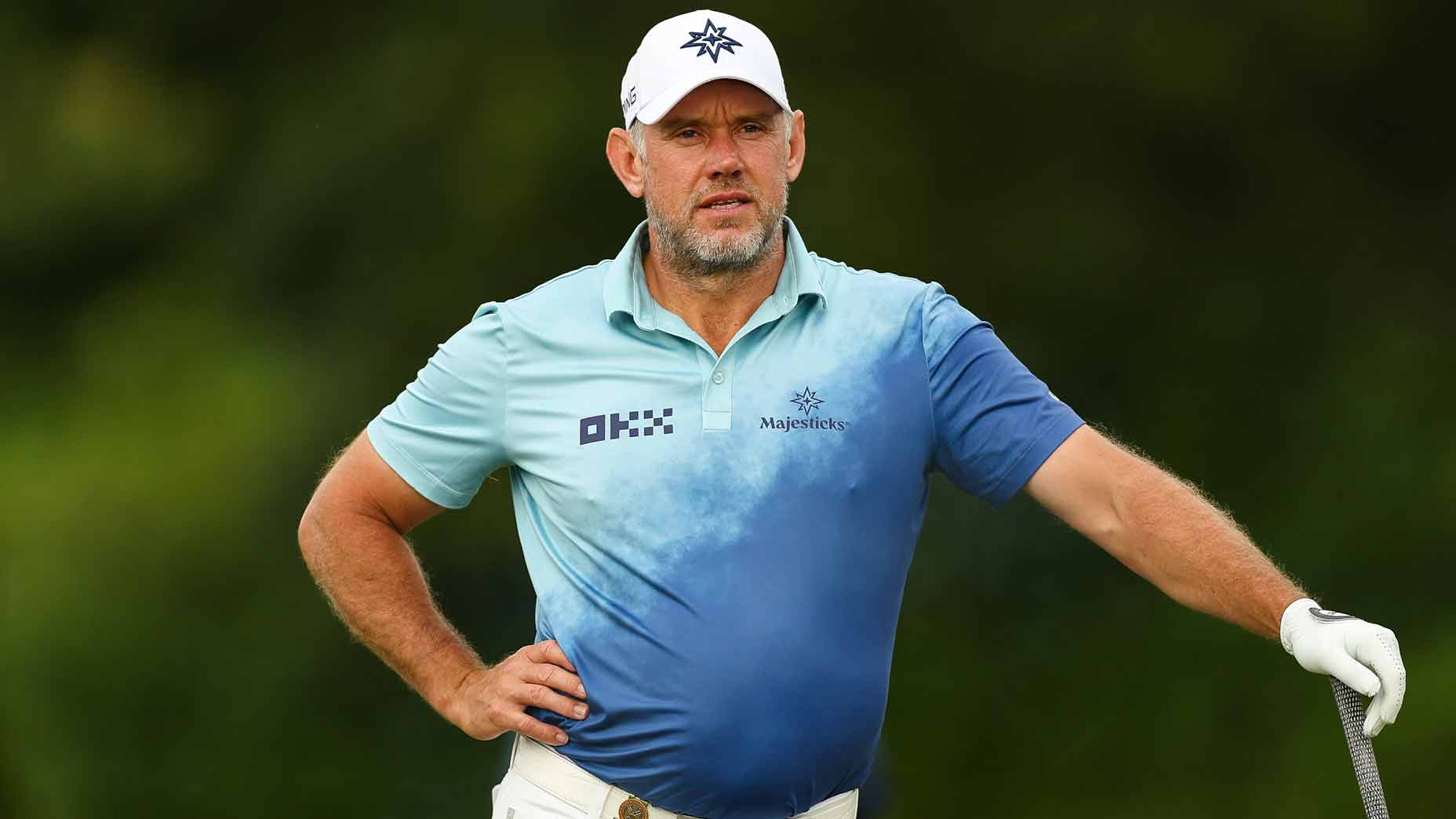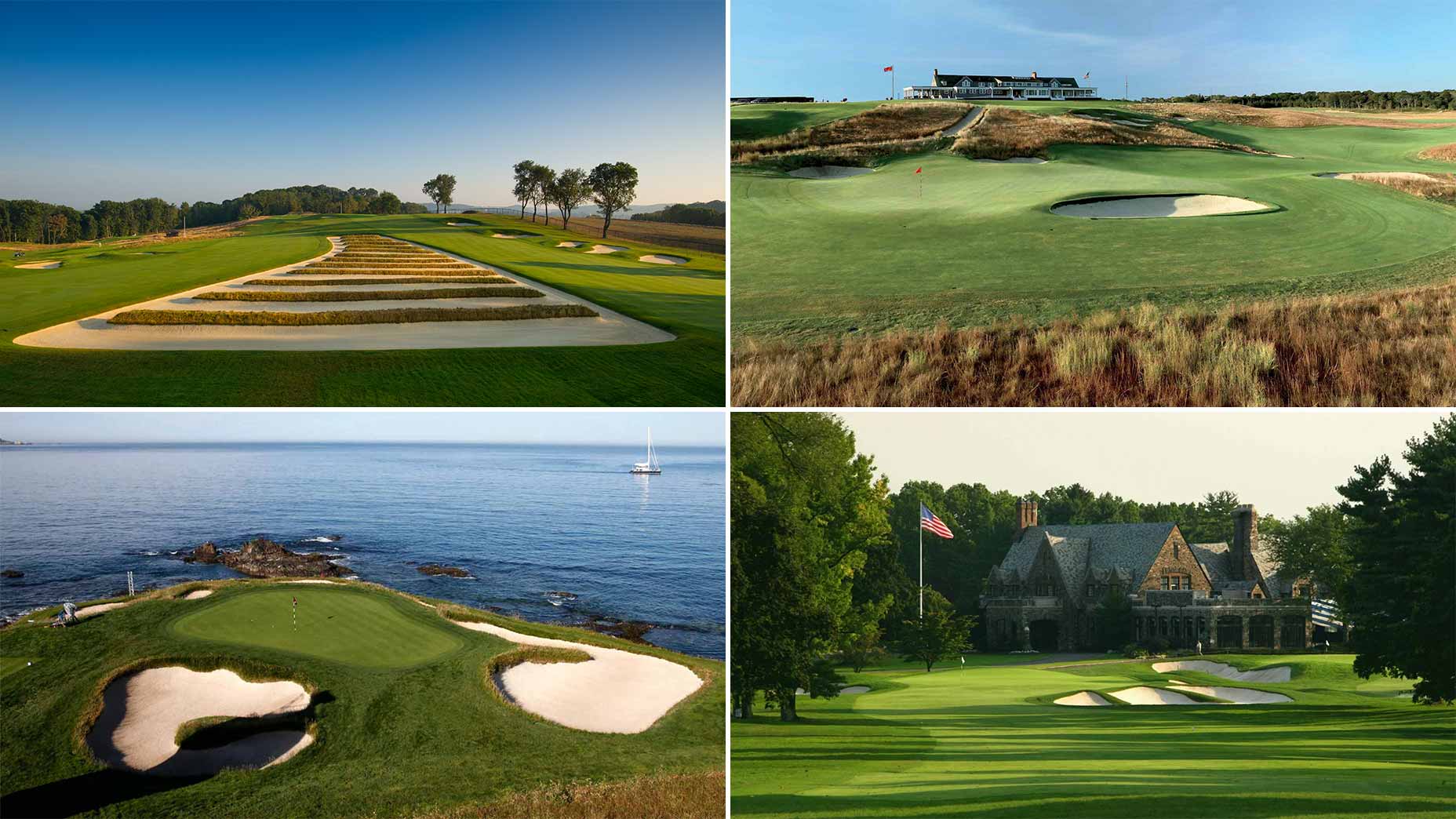How can golf courses use less water? This club’s forward-thinking tactics offer clues

Hillcrest Country Club uses drone footage to help conserve water.
Google Maps/Hillcrest CC
Four times a week, around noon, a drone operated by a pilot in Boston takes flight in Los Angeles, buzzing back and forth over Hillcrest Country Club.
Nearly an hour of aerial reconnaissance later, having surveyed every inch of turf below it, the remote-controlled machine touches down where it started, delivering data to Matt Muhlenbruch and his crew.
Muhlenbruch is the director of agronomy at Hillcrest, a golf club that stands at the forefront of a growing industry effort. The club is a leader in water conservation, and the drone plays a key role in its campaign.
“In arid region like ours, water is a huge topic of conversation, especially over the last five years or so of severe drought,” Muhlenbruch says. “We’re dealing with a finite resource that everybody needs. We need to figure out the best ways to save and allocate it. In golf, we’re trying to leverage every tool we have to do our part.”
At 42, Muhlenbruch is a 20-plus year veteran of his trade, with a resume highlighted by stints at the Olympic Club, in San Francisco, and Poppy Hills, in Monterey. He signed on at Hillcrest in early 2019, as the club was wrapping up an ambitious renovation of its Golden-Age Willie Watson design. As part of the redo, the club’s kikuyu fairways had been swapped out for a more drought-resistant strain of Bermuda, and the irrigation system had been redesigned to provide more precision and control.
The new infrastructure went a long way toward water savings. But it was also just the start.
As Hillcrest readied to reopen, Muhlenbruch and his team conducted what amounted to an agronomic audit with a turf probe towed behind a ride-on machine. The probe came back with course-wide data on everything from moisture levels and compaction to turf vigor and salinity.
“As a superintendent, you have a pretty good idea of where your dry and wet spots are,” Muhlenbruch says. “There’s an element of feel and art to the work. But, of course, it’s also science. And when you have all the information, you eliminate any guesswork and you can really start to dial in your programming.”
Along with additional water savings, the fine-tuned practices yielded purer playing conditions, which in turn highlighted the nuances of the redesign. The benefits were self-reinforcing. And further improvements were still to come.
Roughly a year later, Hillcrest brought in the drone. Operated by a Boston-based company called GreenSight, the mid-day flights take bird’s-eye thermal readings of the course, producing colored heat maps that convey vital plant-health information in shades of orange, red and green.
Drawing on these high-tech insights, Muhlenbruch and his team have bored down further on an irrigation plan that divides the property into categories — dry, compact, wet, average — and treats every patch of turf according to its needs. They have also tied the readings to their GPS-steered spray rigs to apply fertilizer more efficiently.
It is, Mulhenbruch says, “an elaborate orchestra of practices,” and it’s music to a superintendent’s ears.
The club’s efforts also harmonize with the golf industry’s broader ambitions, spearheaded by the USGA.
Over the next 15 years, the game’s governing body has committed $30 million to address what the organization’s CEO, Mike Whan, has described as an existential issue. There’s no way around it, Whan says. The long-term viability of green-grass courses “will be threatened if the game doesn’t advance this critical work now.”
Among other initiatives, the USGA is working on a comprehensive water-management “playbook,” a one-stop reference for course operators that lays out best practices recommendations in nine key areas. Together, these recommendations — which cover everything from precision irrigation and surface-water optimization to turf-quality expectations —stand to help the average course in the West save up to nearly 50 percent on water. Among the areas for savings: cutting back on irrigated turf.
“The less grass you have to water, the less water you have to use,” says Matteo Serena, the USGA’s senior manager of irrigation research and services.
Maximizing water savings means seizing on the latest technology, which, in recent decades, has advanced by leaps and bounds.
“It used to be that the only way that you were conserving water was to shut off your irrigation,” Muhlenbruch says. “I’m not that old, but even thinking of where we were when I got started to where we are now, with soil moisture readings and precision irrigation and so many other sophisticated tools, the difference is night and day.”
At Hillcrest, Muhlenbruch has plenty more on his agenda. Among the next steps, he says, is a more seamless integration of new technologies and infrastructure that will make the club’s already refined practices even more precise. But being a good steward isn’t just a matter of how you use your water. It’s also a question of where you get it. In collaboration with its local municipalities, Hillcrest aims to reach a point in the years ahead when it will rely exclusively on non-potable water.
Not all properties, of course, have the resources to be so ambitious. But not all water-saving measures are cost-prohibitive either. At Hillcrest, Muhlenbruch says, the upfront investments in technology have been relatively modest, particularly considering the savings they have brought. And besides, throughout the industry, the price of doing nothing would be too much to bear.
“When you think about the possibility course closures and less accessibility to the game, it’s pretty obvious,” Muhlenbruch says. “The alternative doesn’t look so good.”











